Shiva Maharaj
The Value of Chess Squares
Jul 08, 2023Abstract:Valuing chess squares and determining the placement of pieces on the board are the main objectives of our study. With the emergence of chess AI, it has become possible to accurately assess the worth of positions in a game of chess. The conventional approach assigns fixed values to pieces $(\symking=\infty, \symqueen=9, \symrook=5, \symbishop=3, \symknight=3, \sympawn=1)$. We enhance this analysis by introducing marginal valuations for both pieces and squares. We demonstrate our method by examining the positioning of Knights and Bishops, and also provide valuable insights into the valuation of pawns. Notably, Nimzowitsch was among the pioneers in advocating for the significance of Pawn structure and valuation. Finally, we conclude by suggesting potential avenues for future research.
Chess AI: Competing Paradigms for Machine Intelligence
Sep 23, 2021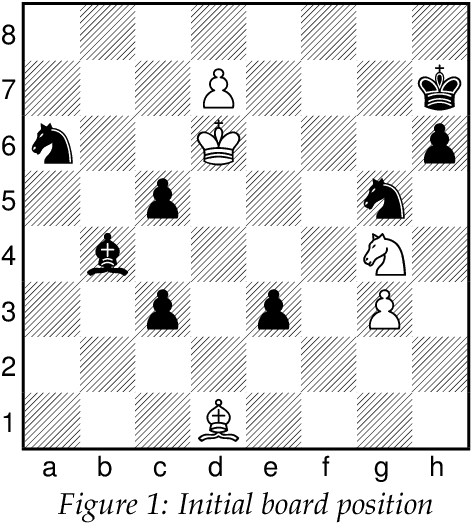
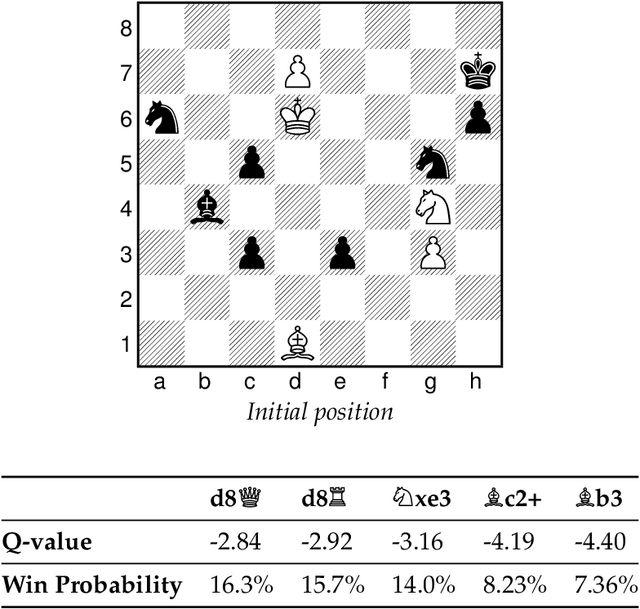


Abstract:Endgame studies have long served as a tool for testing human creativity and intelligence. We find that they can serve as a tool for testing machine ability as well. Two of the leading chess engines, Stockfish and Leela Chess Zero (LCZero), employ significantly different methods during play. We use Plaskett's Puzzle, a famous endgame study from the late 1970s, to compare the two engines. Our experiments show that Stockfish outperforms LCZero on the puzzle. We examine the algorithmic differences between the engines and use our observations as a basis for carefully interpreting the test results. Drawing inspiration from how humans solve chess problems, we ask whether machines can possess a form of imagination. On the theoretical side, we describe how Bellman's equation may be applied to optimize the probability of winning. To conclude, we discuss the implications of our work on artificial intelligence (AI) and artificial general intelligence (AGI), suggesting possible avenues for future research.
Karpov's Queen Sacrifices and AI
Sep 15, 2021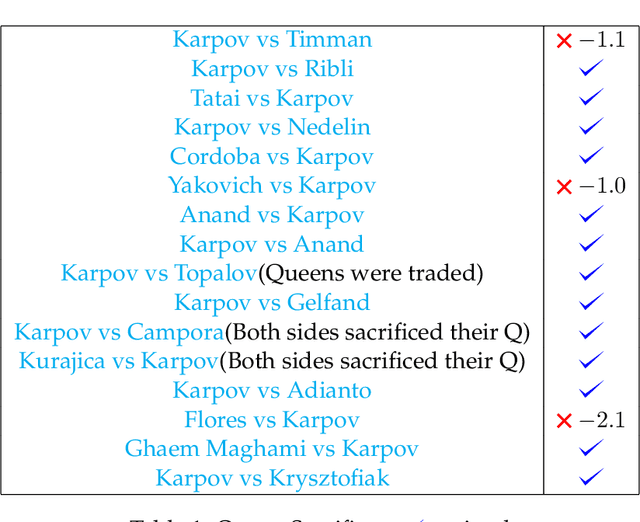
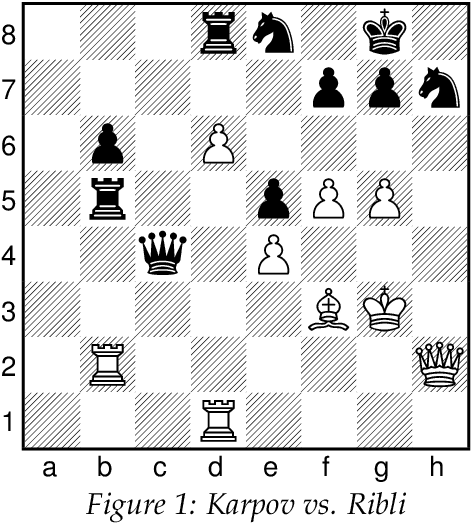
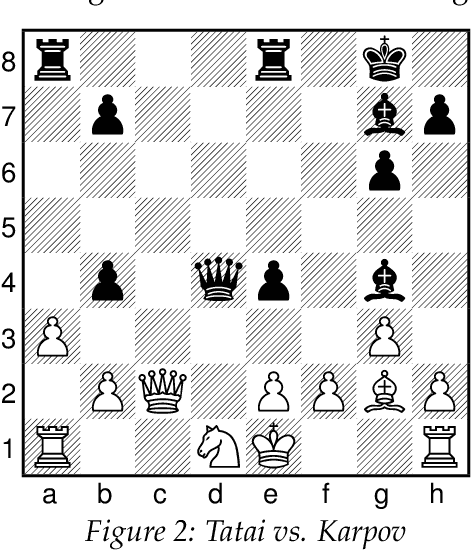
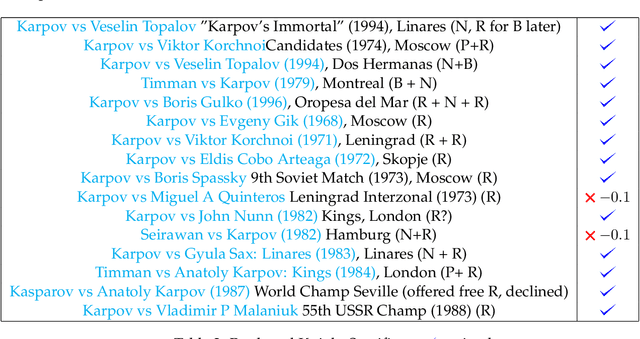
Abstract:Anatoly Karpov's Queen sacrifices are analyzed. Stockfish 14 NNUE -- an AI chess engine -- evaluates how efficient Karpov's sacrifices are. For comparative purposes, we provide a dataset on Karpov's Rook and Knight sacrifices to test whether Karpov achieves a similar level of accuracy. Our study has implications for human-AI interaction and how humans can better understand the strategies employed by black-box AI algorithms. Finally, we conclude with implications for human study in. chess with computer engines.
 Add to Chrome
Add to Chrome Add to Firefox
Add to Firefox Add to Edge
Add to Edge